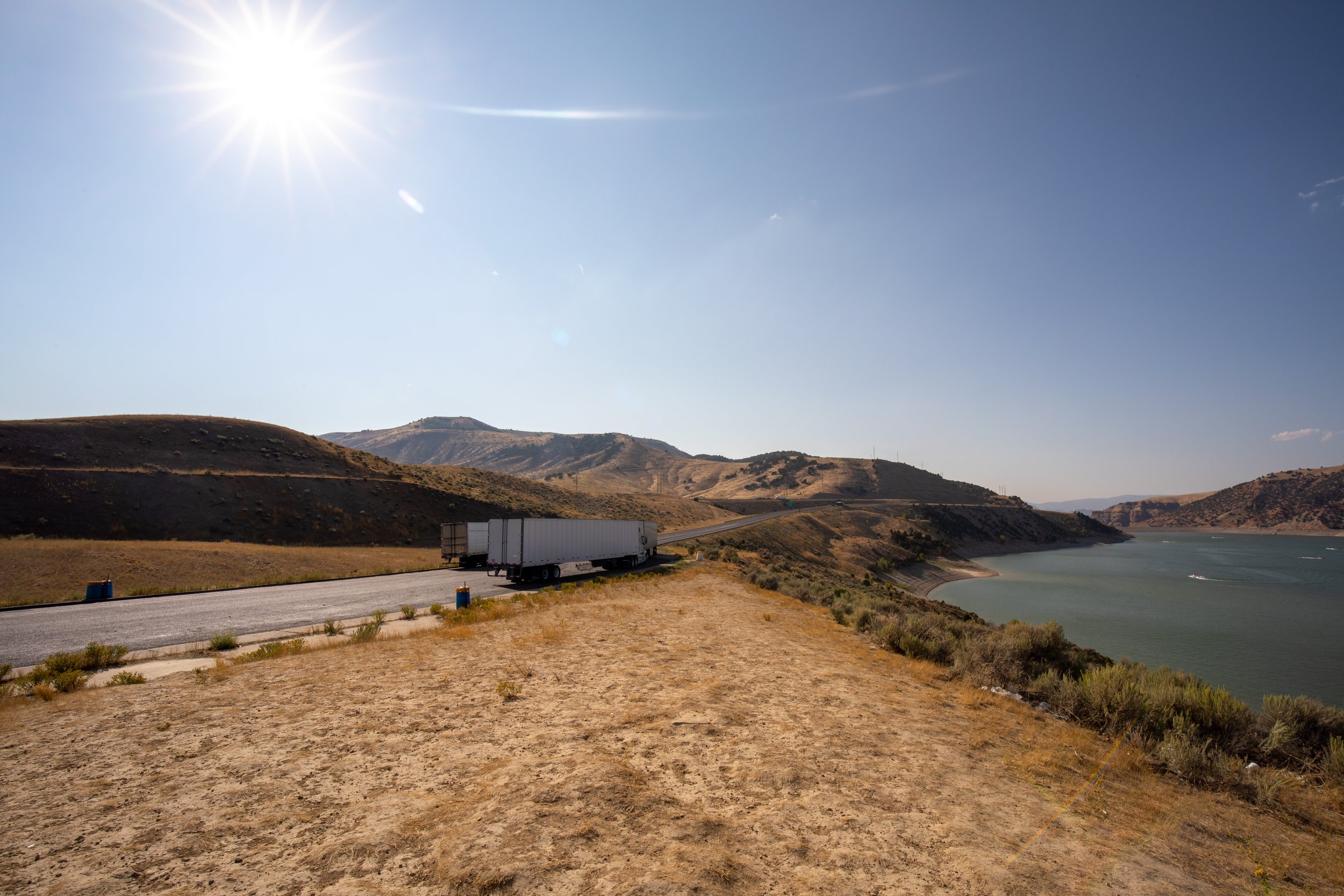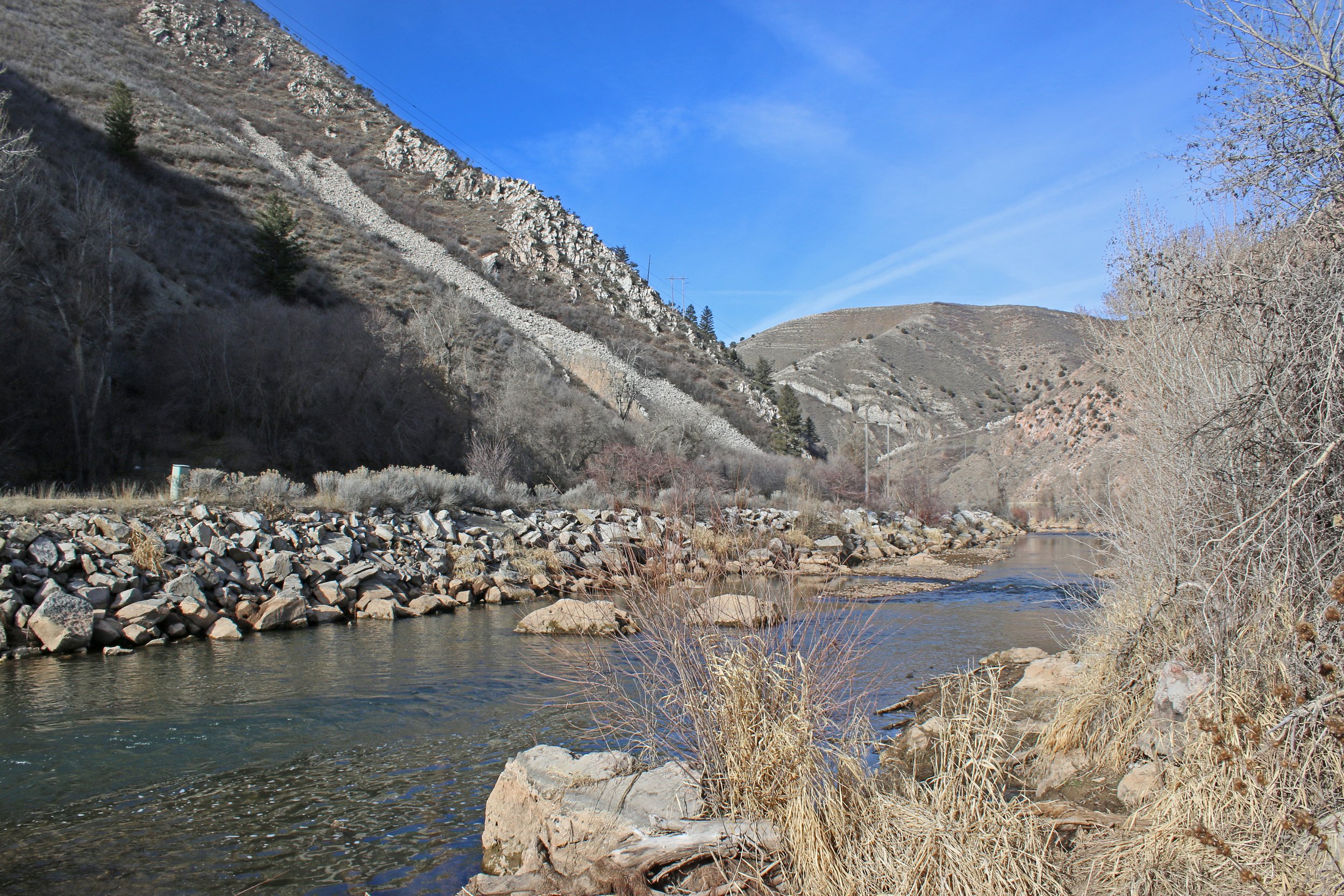Winding Along the Weber for What Could Be Utah’s Next Wildlife Crossing
It was a bright spring day with not a cloud on the horizon. One of those days where the vibrant blueness of the sky contrasts starkly with the dead, yellow grasses and the yet-to-bloom vegetation of the coming season.
I was on a bus with my colleagues Michael Dax and Lindsay Martindale, headed to visit the stretch of Interstate 84 in northern Utah that’s a hotspot for wildlife-vehicle collisions. The excursion was led by the Utah Department of Transportation (UDOT), and we were accompanied by several representatives from that agency as well as staff from Utah Division of Wildlife Resources, other NGO partners, Utah Connectivity Working Group, and most notably, Utah State Representative Doug Owens (D-Millcreek).
Interstate 84 near Croydon, Utah. Photo: Danielle Fisher
The conversation on the bus ranged from an example of an effective wildlife bridge near Pinedale, Wyoming, to UDOT’s process for removing and documenting roadkill, to the soon-to-be-groundbroken Liberty Canyon wildlife crossing in Southern California, which will be the largest in the world. This was clearly a group invested in finding solutions for wildlife.
In Utah, collisions between vehicles and wildlife are just as much a concern as in other western states. One of the UDOT staff members sitting near me showed us a map of reported vehicle collisions along I-84 over the past two years. The collision points lined the road from east to west with frequencies as many as 25 times in some places! This doesn’t even account for the vast number of incidents that go unreported; the true total may be as many as four or five times as many.
At one point along the highway Representative Owens pointedly observed that any wildlife traveling south to north would have to cross not just the road, but a fence, railroad tracks, another fence, a concrete barrier, two eastbound lanes of traffic, a third fence, two westbound lanes of traffic a then a fourth fence on after the other in order to continue their journey.
But, the good news is that crossing structures and wildlife-friendly fences implemented in Utah so far have reduced wildlife-vehicle collisions by 90% statewide – and more may be on their way. Just a few weeks prior to this trip, the Utah State legislature had passed two important measures to protect both wildlife and people along roads:
1. House Bill 427, which was sponsored by Representative Owens, requires the Department of Transportation to report annually on actions it's taken to reduce wildlife-vehicle collisions.
2. $1 million allocated to wildlife crossing structures along I-84.
Wildlands Network collaborated closely with NGO partners including the Pew Charitable Trusts, National Wildlife Federation, and Rocky Mountain Elk Foundation to advance both pieces of legislation to carry forward a vision of connectivity for wildlife in Utah and across the Western Wildway. The $1 million appropriation, in particular, is intended to leverage the Wildlife Crossings Pilot Program, which was created through the bipartisan infrastructure bill last fall. Through a competitive grant process, this $350 million fund will be available to states over the next five years to support wildlife crossings like the one being planned for I-84. The field trip was an opportunity for all of us to see firsthand a place where this funding could make a big impact.


“With federal funds becoming available, the more Utah works to identify wildlife crossing priorities, the more competitive Utah will be in receiving those grants,” Michael pointed out, a sentiment echoed in a recent Deseret News op-ed.
As we winded back through Weber Canyon, several of us noted the unseasonably low water levels in the river—not a good sign for early spring when water melting from the mountain snowpack rushes through the ravines and gullies, rising water levels.
This is the result of years of drought throughout Utah, especially the Great Salt Lake basin, which has put further strain on resources and highlighted the importance of connected habitats. As basic resources like water become scarcer, wildlife are forced to travel further to reach what they need to survive. That includes attempting to cross highways like Interstate 84, which is why we must continue to invest in wildlife crossings that will connect habitat and protect wildlife for generations to come.
Wildlands Network has partnered with Arc Solutions, Center for Large Landscape Conservation, and the National Parks Conservation Association to track the progress of the $350 million dollar Wildlife Crossings Pilot Program. We're hosting a webinar series through which you can learn more about the importance of wildlife infrastructure and how to apply for funding opportunities if you're eligible. Find out more and register here.


